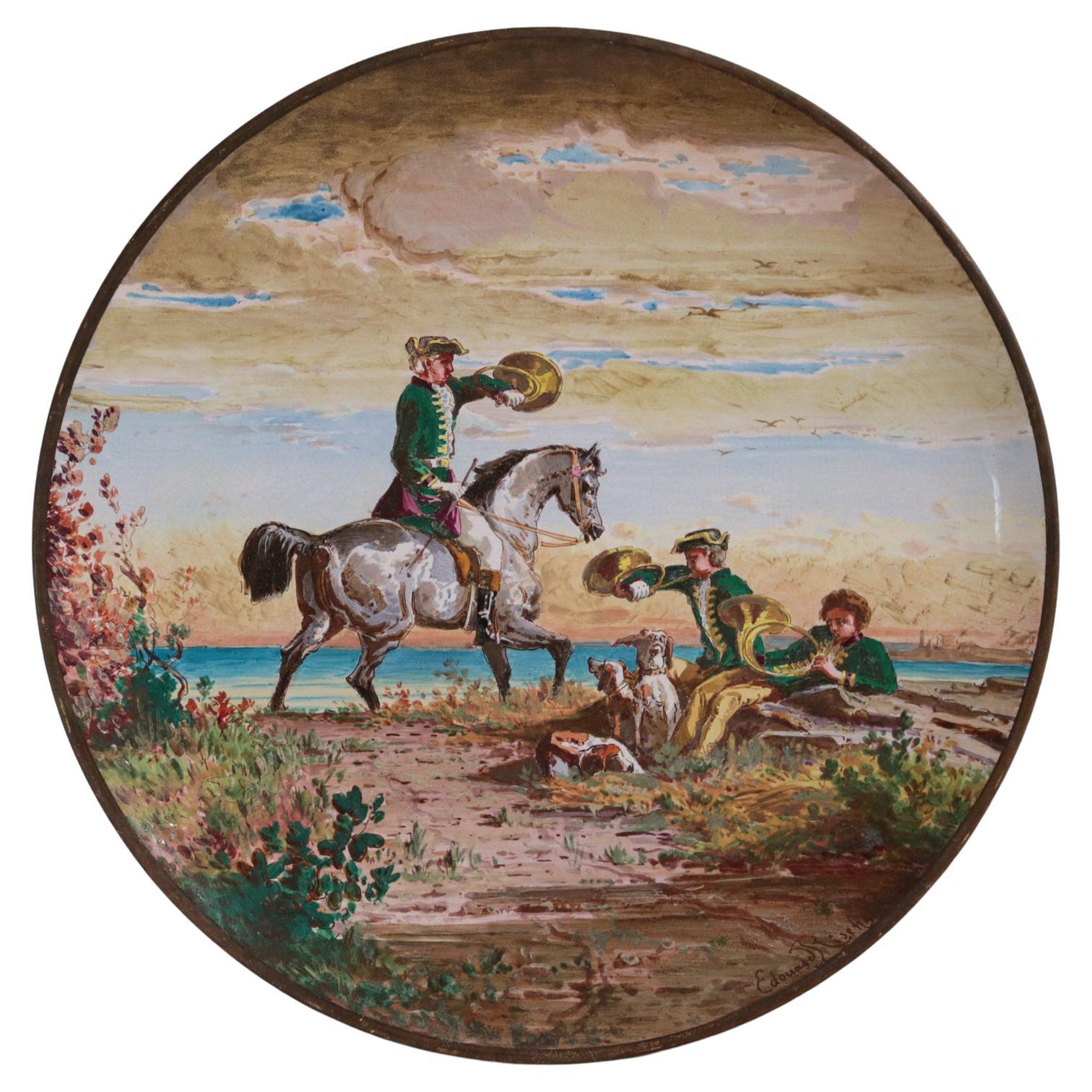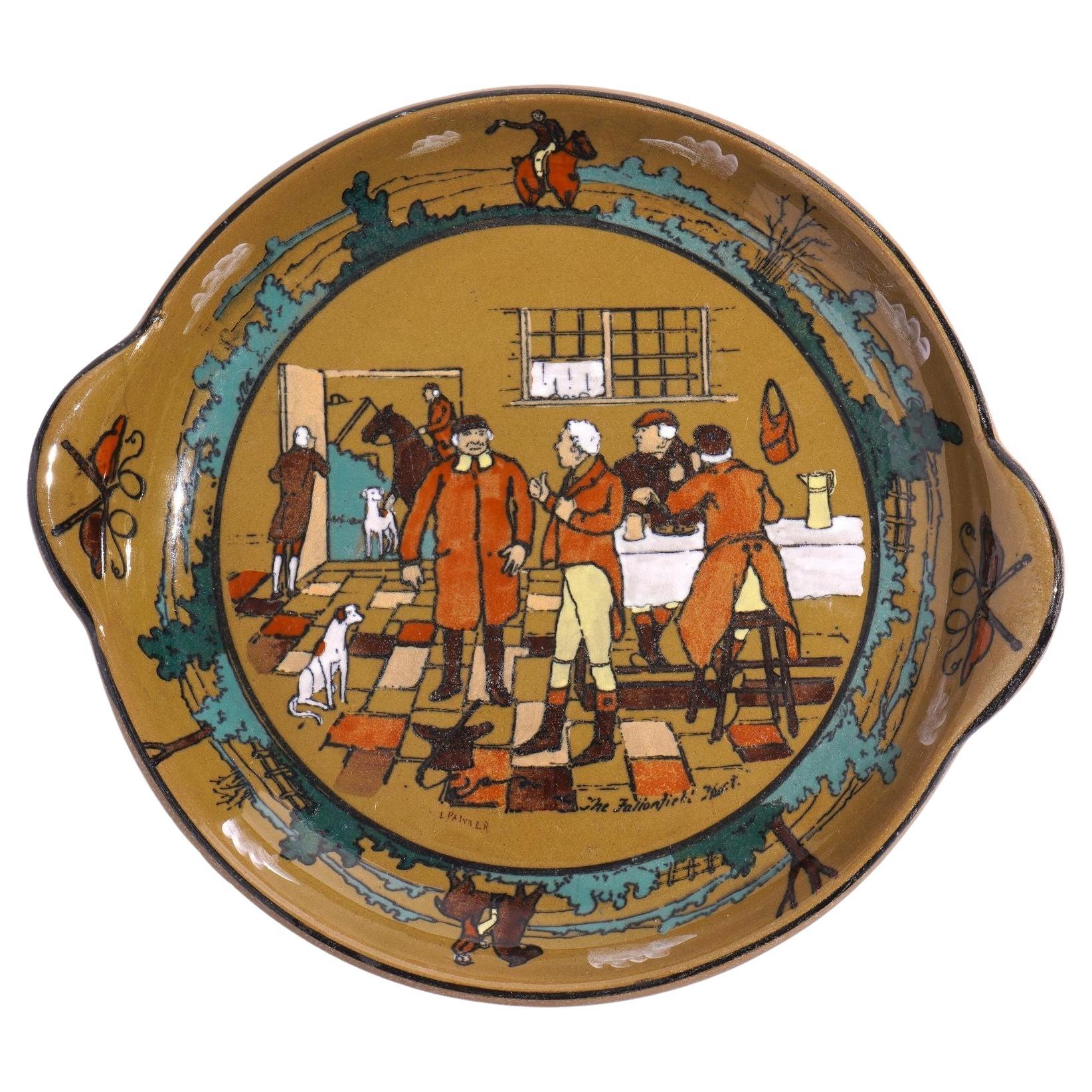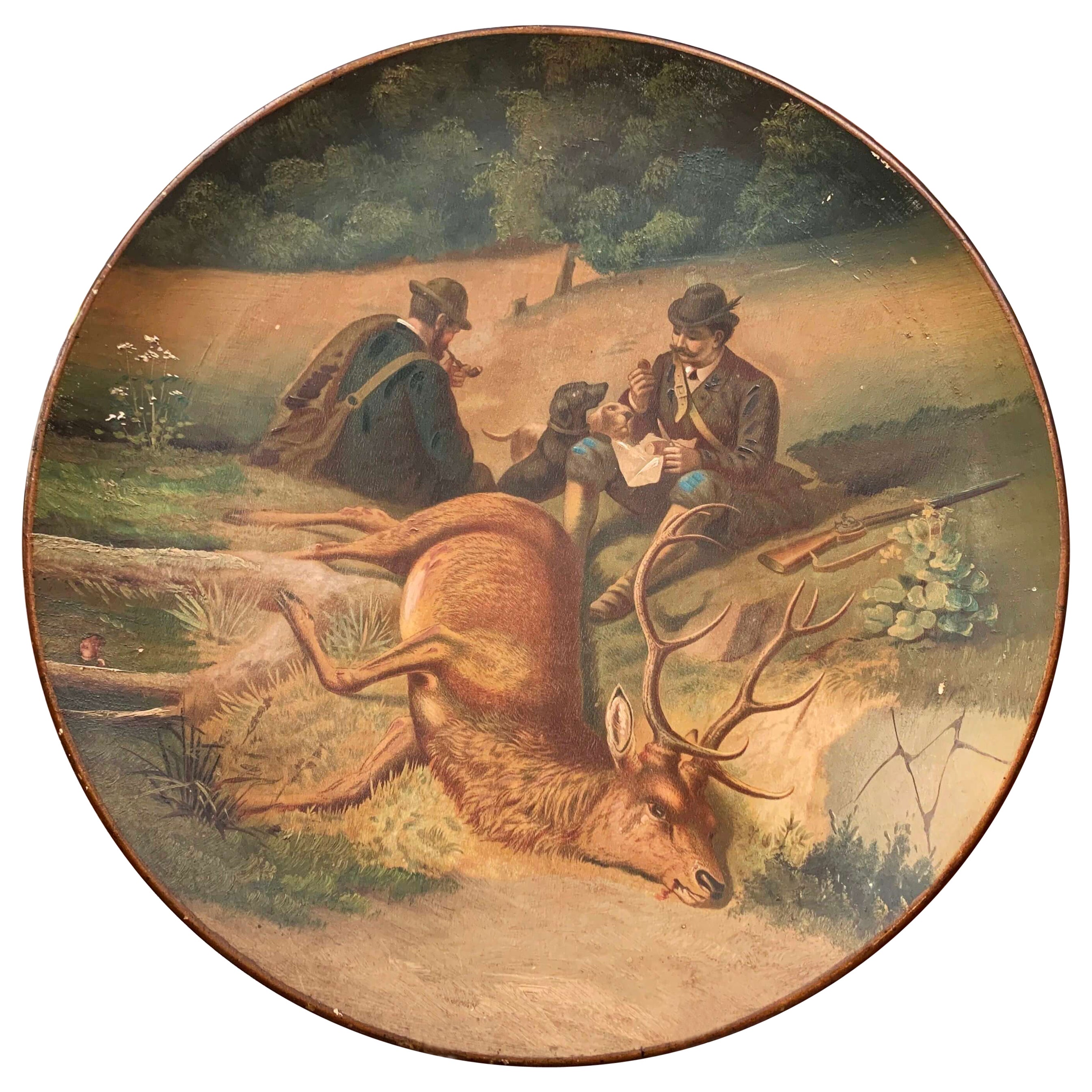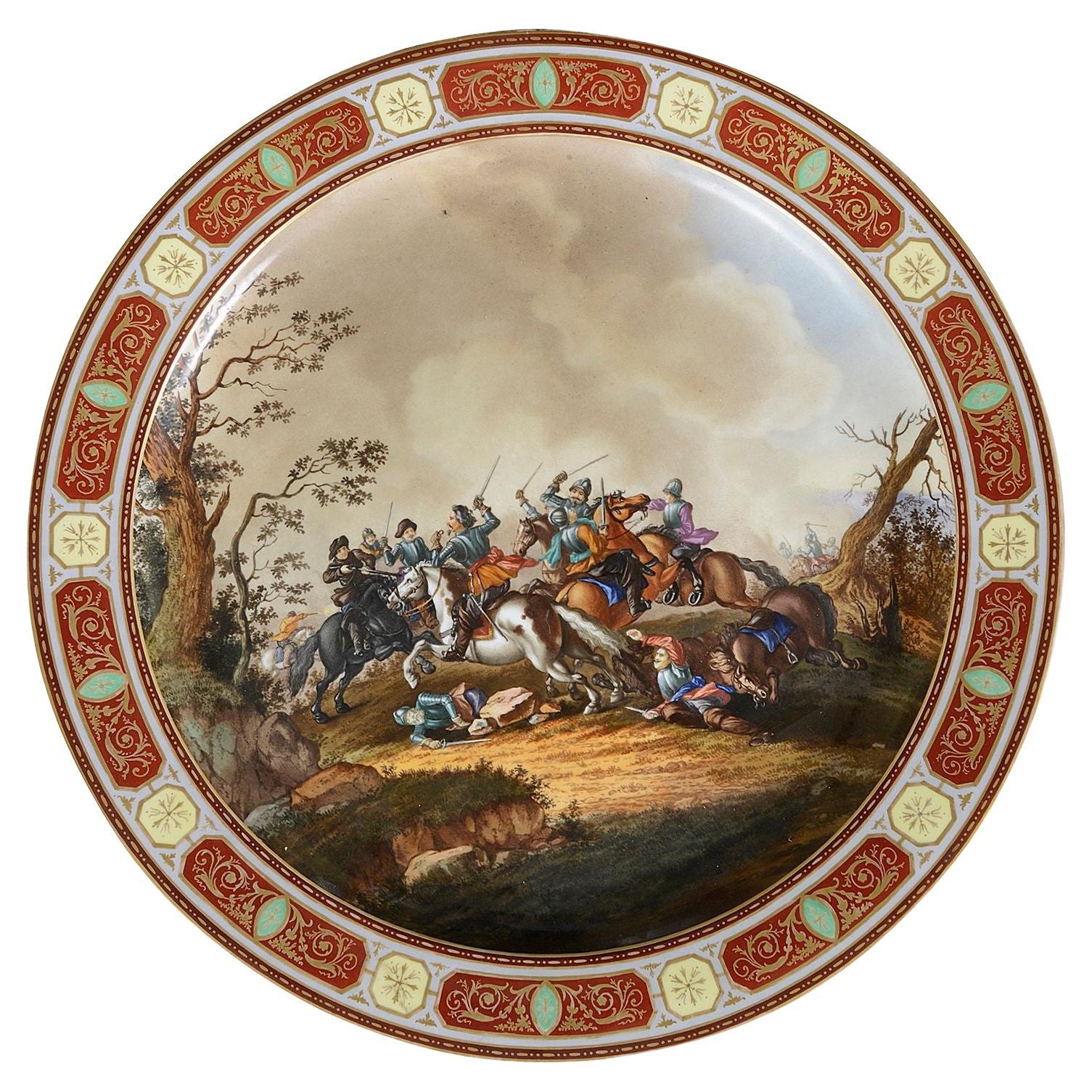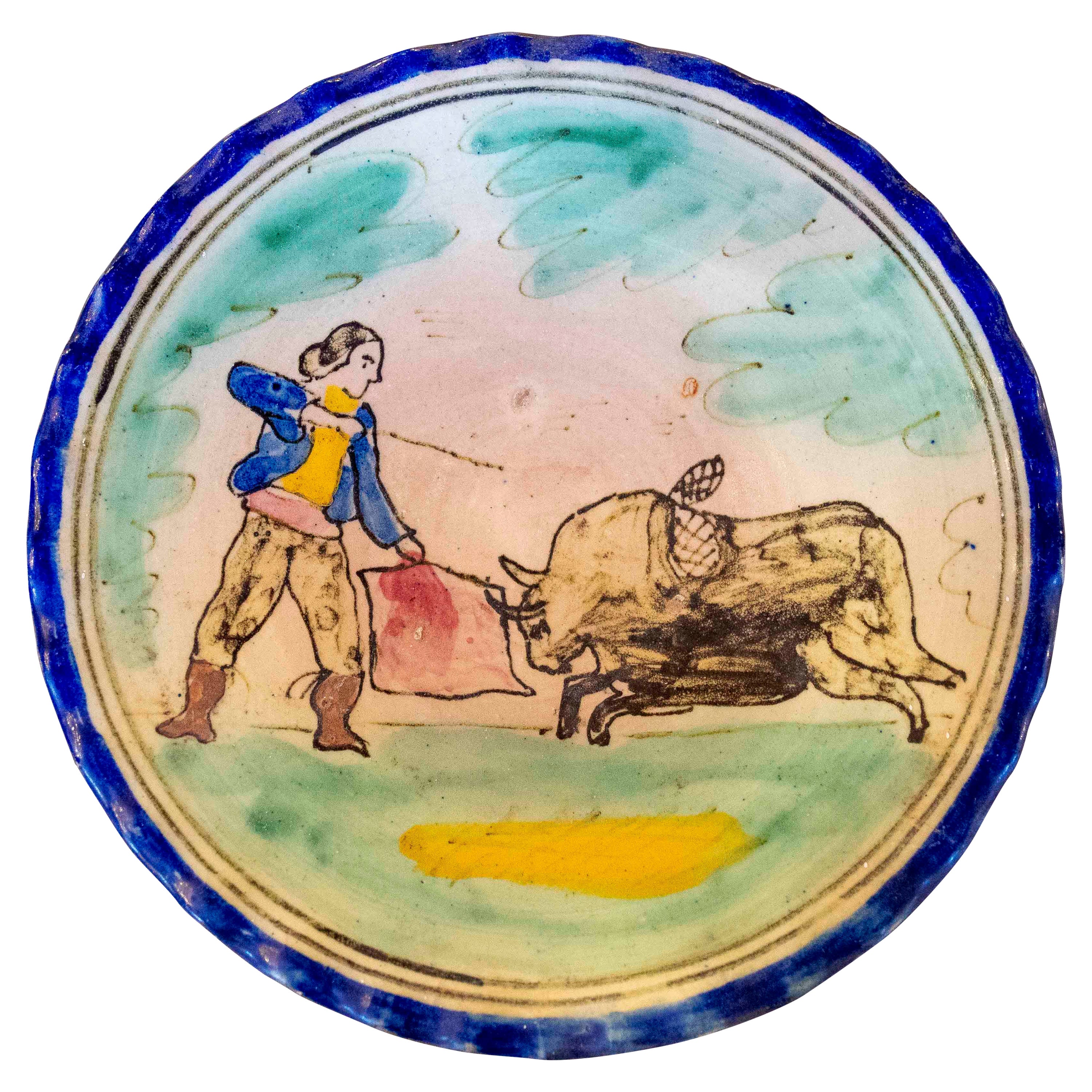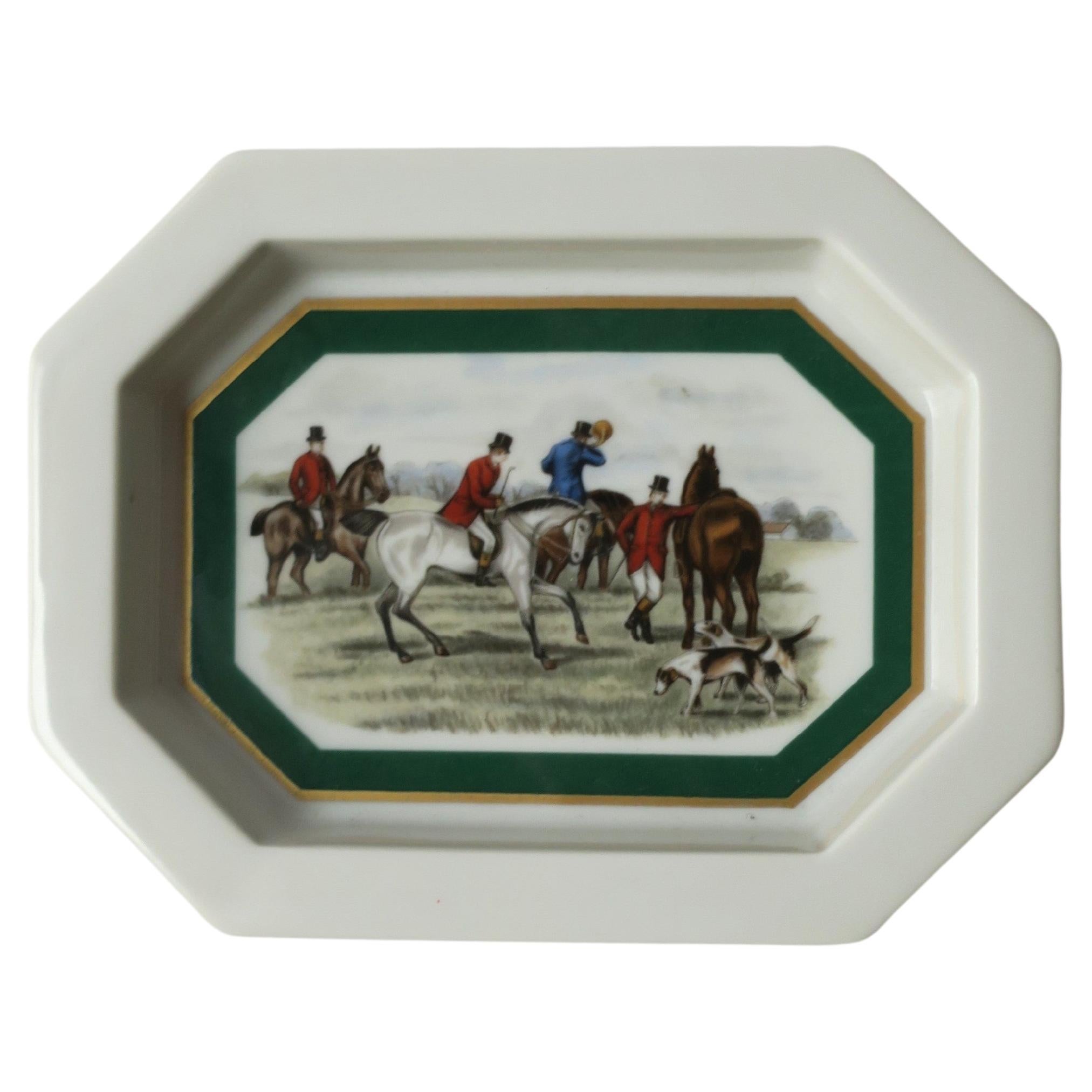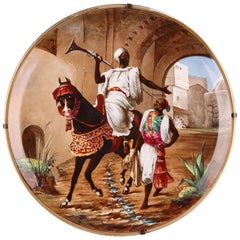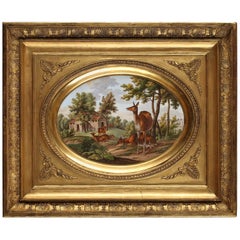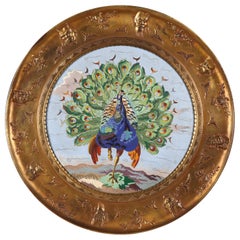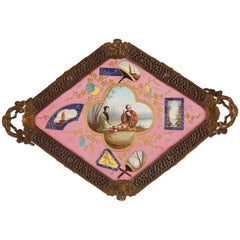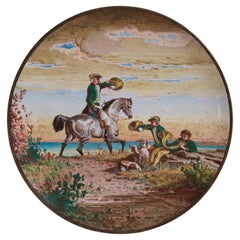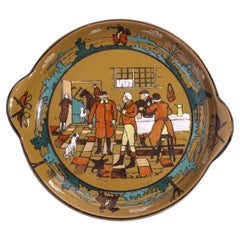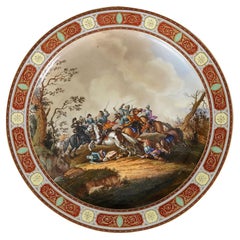Items Similar to "The Donkey Race" Limoges Porcelain Dish, Signed F. Mérigot, France, Circa 1890
Want more images or videos?
Request additional images or videos from the seller
1 of 8
"The Donkey Race" Limoges Porcelain Dish, Signed F. Mérigot, France, Circa 1890
$898.61per item
£668.83per item
€750per item
CA$1,230.87per item
A$1,368.99per item
CHF 714.85per item
MX$16,659.20per item
NOK 9,129.67per item
SEK 8,562.02per item
DKK 5,709.49per item
Quantity
Shipping
Retrieving quote...The 1stDibs Promise:
Authenticity Guarantee,
Money-Back Guarantee,
24-Hour Cancellation
About the Item
Charming Limoges porcelain dish with scalloped edges representing a popular festival, a donkey race in a village in Bretagne, attended by families in traditional outfits.
Maximilien-Ferdinand Mérigot (1822-1892) is a French porcelain painter who worked at the Manufacture de Sèvres and Limoges. His works are exhibited at the Musée d’Orsay, the Louvre museum and the Manufacture-museum of Sèvres.
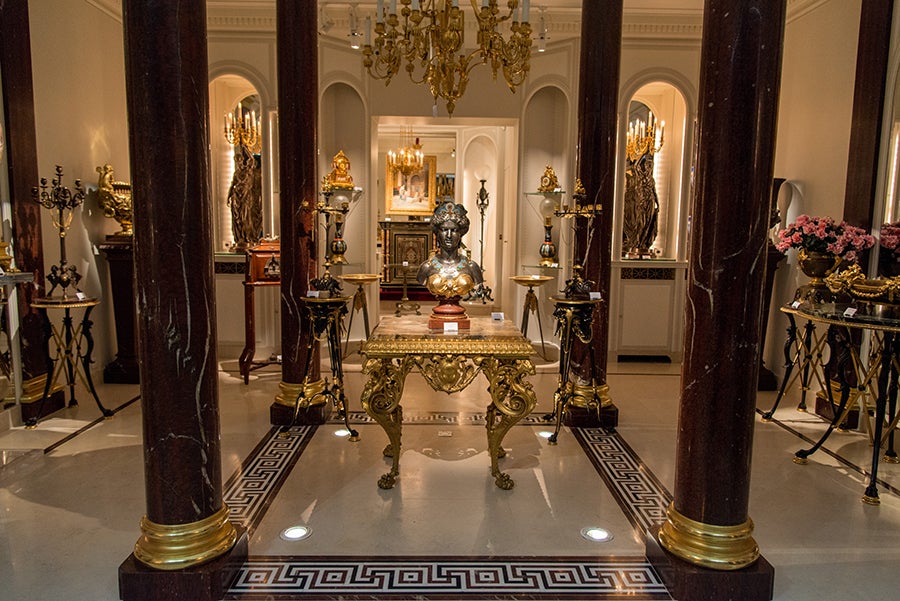
About the Seller
4.9
Vetted Professional Seller
Every seller passes strict standards for authenticity and reliability
Established in 1997
1stDibs seller since 2018
87 sales on 1stDibs
Typical response time: 1 hour
Associations
International Confederation of Art and Antique Dealers' Associations
- ShippingRetrieving quote...Shipping from: Saint Ouen, France
- Return Policy
Authenticity Guarantee
In the unlikely event there’s an issue with an item’s authenticity, contact us within 1 year for a full refund. DetailsMoney-Back Guarantee
If your item is not as described, is damaged in transit, or does not arrive, contact us within 7 days for a full refund. Details24-Hour Cancellation
You have a 24-hour grace period in which to reconsider your purchase, with no questions asked.Vetted Professional Sellers
Our world-class sellers must adhere to strict standards for service and quality, maintaining the integrity of our listings.Price-Match Guarantee
If you find that a seller listed the same item for a lower price elsewhere, we’ll match it.Trusted Global Delivery
Our best-in-class carrier network provides specialized shipping options worldwide, including custom delivery.More From This Seller
View AllFine Orientalist Dish by Lebeuf, Milliet & Cie, France, Circa 1845
By Lebeuf Milliet & Cie Creil Montereau
Located in PARIS, FR
Signed by Cojoie AD, the decor-painter
and on the reverse, LM et Cie, the making mark of the manufacture
A circular hand painted pottery charger, decorated with an orientalist sc...
Category
Antique 1840s French Decorative Dishes and Vide-Poche
Materials
Earthenware
$8,147 Sale Price
45% Off
Charming Paris Porcelain "Deers in a Landscape" by Saunier, French School, 1819
Located in PARIS, FR
An oval porcelain plaque painted by Saunier, with deers in a landscape and a hovel in the background. It is inserted in a giltwood frame with pal...
Category
Antique 1810s French Paintings
Materials
Giltwood, Porcelain
Aesthetic Movement Enameled Plate Attributed to Elkington and A. Willms, c. 1875
By Elkington & Co., W. Albert Willms
Located in PARIS, FR
Important tray made in gilded bronze and “cloisonné” enamel attributed to Elkington and Willms. Ornamented with a centering polychrome enameled peacock plaque, made of very high standard quality, mounted on a gilt-bronze dish, decorated in relief with Japanese Nô theater masks.
The great Birmingham firm of Elkingtons, was largely the creation of George Richards Elkington (1800-1865), who worked from 1824 in Birmingham as a manufacturer of silver-mounted scent bottles. By 1829 the business had expanded sufficiently for a branch to have been established in London. In the late 1830s the Elkingtons began making experiments to apply the principles of electro-metallurgy to gilding and plating with silver and in 1840 the patent was at last taken out. Elkingtons owed their rise to a position amongst the most important silversmiths of the country to their exploitation of this new process and the two of the most famous designers then employed, both of them French, Albert Wilms (1827-1899) and Morel-Ladeuil (1820-1888), who helped to make Elkingtons’ reputation with their elaborate exhibition pieces.
Albert Willms was apprenticed as modeler and engraver to Klagman, Dieterle and Constant in Paris before working for Morel & Co. in London in 1848. On his return to Paris he was employed by the great Parisian silversmiths including Christofle and Froment-Meurice, for whom he designed pieces to be presented at the 1855 Universal Exhibition in Paris. It was during this period that he joined the firm of Elkington in London as head decorator. Elkington was soon to become one of the first to produce refined pieces in “champlevé” enamel in the Chinese and Japanese styles, which were presented with great success at the London Universal Exhibition in 1862 (see Masterpieces of Industrial Art & Sculpture at the International Exhibition 1862, J.B. Waring, London, 1863, III, pl. 211). Willms’ “champlevé” enamels could not be compared, however, with the delicate “cloisonné” enamels exhibited by Japan at the Universal Exhibition in Paris in 1867. This explains why Elkington adapted the ancient Japanese technique to produce pieces according to European taste and custom. Followings the 1867 Exhibition all the major European artists rivaled in ingenuity for the 1873 Universal Exhibition in Vienna. In London Albert Willms presented his luxurious vases and cups in “cloisonné” enamel for Elkington (see Illustrations of Art Manufacturers in the Precious Metals exhibited by Elkington & Co., Inventors, Patentees and Manufactures of electroplate, 1873), whilst in Paris, Ferdinand Thesmar (1843-1912) produced in the workshops of Ferdinand Barbedienne (1810-1892) a tray decorated with a golden pheasant in “cloisonné” enamel on copper...
Category
Antique 1870s English Aesthetic Movement Decorative Dishes and Vide-Poche
Materials
Enamel, Bronze
$16,174
Free Shipping
Charming Japanese Style Tray Attributed to l'Escalier de Cristal, France, c.1880
By L'Escalier de Cristal
Located in PARIS, FR
Rare Japanese style diamond-shaped tray attributed to l'Escalier de Cristal, representing lake landscapes in cartouches, and adorned in its center with a lunch scene with a Japanese couple in traditional dress, all highlighted by a gilded decor of flowering branches on a pink porcelain background.
The whole is framed by a gilded openwork bronze mount ending on the sides by two handles.
“L’Escalier de Cristal”, an old and famous Parisian firm, specialized in glass products and ceramics but also suggested furniture and bronze sculptures. It was led from 1885 to 1923 by Emile Pannier’s sons, who gave the name of Pannier Frères to the society, located at the corner of Scribe street and Auber street, next to the new built Paris Opera house. Their Japanese style creations were among many others much appreciated by the critics and the public. They were awarded many medals at various exhibitions, such as the Gold medal at the 1900 Paris Universal Exhibition.
Lots of artists participated in that world success, such as Emile Gallé, who gave to Pannier Frères the exclusive rights of some of his models, or François-Eugène Rousseau, who designed many vases and gave the model of his successful Japanese style dining-set as well. This set was made by the Creil et Montereau Manufacture. In the Japanese style furniture...
Category
Antique 1880s French Japonisme Decorative Dishes and Vide-Poche
Materials
Bronze
Planter and Decorative Dish Attributed to Samson & Cie, France, Circa 1880
By Samson & Cie
Located in PARIS, FR
Important porcelain planter and decorative dish attributed to Samson & Cie.
They are decorated with golden and red friezes of intertwined lotus, fruits and flower cups, fans and two...
Category
Antique 1880s French Planters, Cachepots and Jardinières
Materials
Porcelain
"Back From the Fair" Attributed to J.F. Demay, France, 2nd quarter of the 19th C
Located in PARIS, FR
Scene from everyday life representing a crowd returning from the fair, attributed to J.F. Demay.
Born in 1798 in Mire court (Meurthe-et-Moselle Dept.), died in 1850 in Paris, Jean-L...
Category
Antique Mid-19th Century French Paintings
Materials
Giltwood, Canvas
$4,313 Sale Price
57% Off
You May Also Like
Minton Majolica Landscape Scene Wall Plate by Edouard Rischgitz
Located in Chelmsford, Essex
Minton tin-glazed majolica wall plate which features a hand-painted scene of a hunting party in a country landscape. The plate was painted by Edouard Rischgitz - a Swiss painter. Col...
Category
Antique 1860s Ceramics
Materials
Majolica
Deldare Ware "Fallowfield Hunt" circular tray by Buffalo Pottery, 1908
By Buffalo Pottery
Located in Kenilworth, IL
Deldare Ware tray in the "Fallowfield Hunt" pattern. The tray is hand colored and transfer decorated.
Signed on the face by the colorist: L Palmer.
Stamped with the maker's mark, un...
Category
Early 20th Century Decorative Dishes and Vide-Poche
Materials
Ceramic
Early 20th Century German Hand Painted Ceramic Hunt Scene Wall Platter
Located in Dallas, TX
This large, richly colored ceramic platter was crafted in Germany circa 1920 and captures the rustic charm of a traditional Black Forest hunt scene. Round in shape, the hand-painted ...
Category
Early 20th Century German Black Forest Decorative Art
Materials
Ceramic
Impressive Vienna porcelain charger, depicting a Calvery scene, C19th
By Imperial Vienna Porcelain
Located in Brighton, Sussex
This late 19th century Vienna porcelain charger features a vibrant and dynamic scene of a cavalry battle. The central artwork depicts soldiers engaged in combat, mounted on richly ad...
Category
Antique Late 19th Century French Decorative Art
Materials
Porcelain
Hand Painted Spanish Decorative Plate of Archbishop's Bridge Glazed
Located in Marbella, ES
Hand Painted Spanish Decorative Plate of Archbishop's Bridge Glazed
Category
Late 20th Century Spanish Ceramics
Materials
Ceramic
Porcelain Jewelry Dish with Equestrian Horse Scene
By Gucci, Ralph Lauren
Located in New York, NY
A porcelain jewelry dish with equestrian horse scene, circa mid-20th century, Europe. An octagonal jewelry dish/small vide-poche with gold and emeral...
Category
Mid-20th Century European Decorative Dishes and Vide-Poche
Materials
Porcelain
More Ways To Browse
Sevres Porcelain Limoge
Porcelain D Art Limoges France
Porcelain Donkey
Art Deco Wall Pocket
Erte Scarf
Fernando Cano
Hermes Scarf Wall Art
Lace Doilies
Large Chalkboard
Montana Watch Vintage
Pacha Ottoman
Seref Ozen Suzani
Whisky Advertising
Antique Copper Bed Warmer Antiques
Owl Art Hanging
Ackerman Mosaic
Antique Beatrix Potter
Antique Tile Murals
